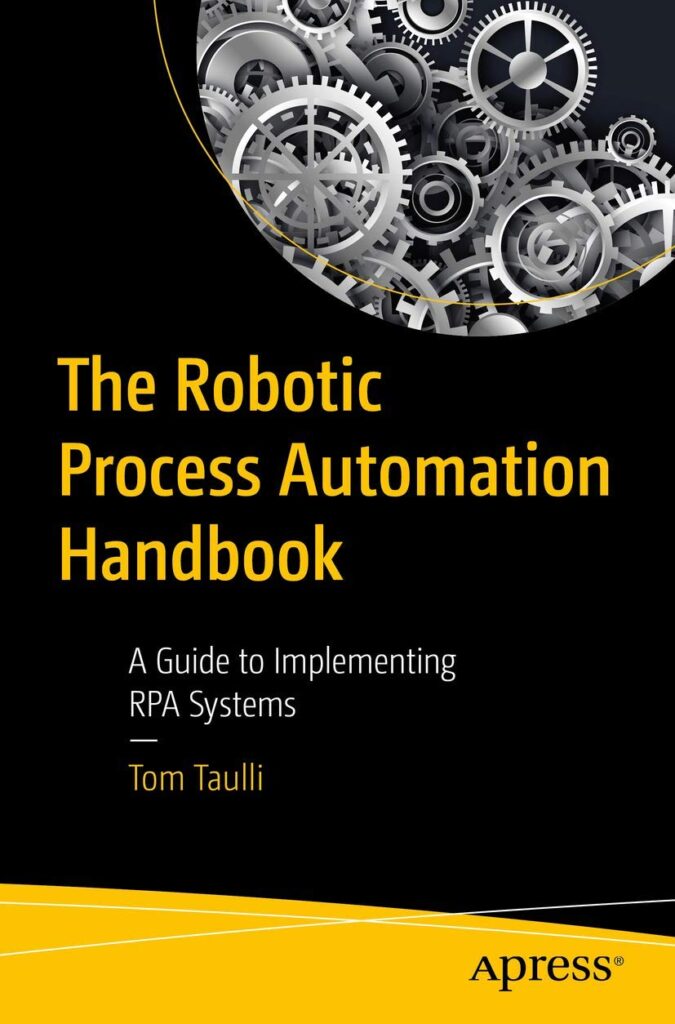In an era defined by rapid technological advancements, Robotic Process Automation (RPA) has emerged as a game-changer for businesses and workers alike. Promising unprecedented efficiency and productivity, RPA is reshaping the way we work—but it also raises critical questions about the future. Is RPA the key to unlocking a new era of innovation and opportunity, or does it signal the end of jobs as we know them? This article dives deep into the world of RPA, exploring its benefits, risks, applications across industries, and what it means for the future of work. Whether you’re a business leader, an employee, or simply curious about automation, this comprehensive guide will equip you with the insights you need to navigate this transformative technology.
What Is Robotic Process Automation (RPA)?
Before we explore the debate, let’s define Robotic Process Automation. At its core, RPA is a technology that uses software robots—or “bots”—to automate repetitive, rule-based tasks traditionally performed by humans. These tasks might include data entry, invoice processing, customer service responses, or even complex workflows like financial reporting. Unlike traditional automation, which often requires significant changes to existing systems, RPA bots mimic human actions by interacting with software applications through user interfaces, making them highly adaptable and cost-effective.
Imagine a bot tirelessly working 24/7, processing hundreds of invoices in minutes without a single error. That’s the power of RPA. By leveraging this technology, businesses can streamline operations, reduce costs, and improve accuracy. But as RPA adoption grows, so does the debate: will it enhance the future of work, or will it lead to the end of jobs?
The Benefits of RPA: A New Era of Efficiency
RPA offers a wealth of advantages that make it an attractive solution for organizations worldwide. Here’s how it’s transforming the workplace:
1. Increased Efficiency and Productivity
RPA bots work faster than humans and don’t need breaks, sick days, or vacations. Tasks that once took hours—like processing customer orders or reconciling accounts—can now be completed in minutes. This boost in efficiency translates to higher productivity, allowing businesses to handle larger volumes of work without expanding their workforce.
2. Reduced Errors and Improved Accuracy
Humans are prone to mistakes, especially in repetitive tasks. RPA bots, however, execute processes with precision, following predefined rules and algorithms. In industries like finance and healthcare, where accuracy is paramount, this reduction in errors can save time, money, and even lives.
3. Cost Savings
By automating routine tasks, companies can cut labor costs and redirect resources to strategic initiatives. While implementing RPA requires an upfront investment, the long-term savings—fewer errors, less rework, and improved compliance—often outweigh the initial expense.
4. Freeing Up Humans for Higher-Value Work
One of RPA’s most compelling benefits is its ability to liberate employees from mundane tasks. When bots handle data entry or customer inquiries, workers can focus on creative, strategic, and interpersonal roles—think problem-solving, innovation, or building client relationships. This shift can enhance job satisfaction and drive business growth.
5. Scalability and Flexibility
Need to process a sudden surge of orders during the holiday season? RPA bots can scale up instantly, no hiring or training required. This flexibility makes RPA ideal for businesses with fluctuating demands.
6. Enhanced Customer Experiences
With RPA managing routine interactions—like answering FAQs or processing refunds—customers enjoy faster, more consistent service. Happy customers mean better retention and loyalty, a win for any business.
Real-World Examples
- Banking: A major bank used RPA to automate loan approvals, slashing processing times from days to hours and delighting customers.
- Healthcare: A hospital deployed bots to schedule appointments, freeing staff to focus on patient care.
- Retail: An e-commerce giant automated inventory management, ensuring products were always in stock and shipped on time.
These examples highlight how RPA can revolutionize operations, making it a cornerstone of the future of work.
The Risks and Challenges of RPA: A Threat to Jobs?
While RPA offers undeniable benefits, it’s not without its downsides. Critics argue that its rise could spell the end of jobs for millions. Let’s examine the challenges:
1. Job Displacement and Unemployment
The most significant concern is job automation. Roles like data entry clerks, customer service reps, and even some accountants face obsolescence as bots take over. A World Economic Forum report predicts automation could displace 85 million jobs by 2025. For workers in automatable roles, this is a stark reality.
2. Skills Gap and Retraining Needs
As RPA shifts the demand toward skills like critical thinking and creativity, many workers may find themselves unprepared. Bridging this skills gap requires massive investment in retraining—something not all employers or governments can provide quickly enough.
3. Ethical Dilemmas
When bots make decisions—like prioritizing patient care or approving loans—ethical questions arise. Can we trust algorithms to be fair? What happens if biases in the system lead to unfair outcomes? These concerns demand careful oversight.
4. Security and Privacy Risks
RPA bots often handle sensitive data, from personal health records to financial details. A security breach could expose this information, making robust cybersecurity a must for any RPA deployment.
5. Over-Reliance on Technology
If businesses lean too heavily on automation, they risk losing resilience. A system failure could grind operations to a halt, especially if human backups aren’t in place. Balance is key.
6. Implementation Hurdles
Deploying RPA isn’t always smooth. Integrating it with legacy systems can be tricky, and employees may resist, fearing job losses. Successful adoption requires planning, communication, and support.
Despite these risks, the same World Economic Forum report notes that automation could create 97 million new jobs by 2025—suggesting that while RPA disrupts, it also innovates.
RPA Across Industries: Transforming the Workplace
RPA’s versatility shines through its applications across diverse sectors. Here’s how it’s making an impact:
1. Finance and Accounting
- Tasks Automated: Invoice processing, account reconciliation, compliance reporting.
- Benefits: Faster transactions, fewer errors, lower costs.
- Example: A global firm cut tax return processing time by 50% with RPA.
2. Healthcare
- Tasks Automated: Patient scheduling, claims processing, data management.
- Benefits: Reduced admin burden, improved patient care.
- Example: A hospital network streamlined onboarding, enhancing efficiency.
3. Customer Service
- Tasks Automated: Chatbot responses, order tracking, refund processing.
- Benefits: Quicker resolutions, happier customers.
- Example: A telecom company reduced response times by 30% with RPA.
4. Manufacturing
- Tasks Automated: Supply chain coordination, quality checks, predictive maintenance.
- Benefits: Leaner operations, fewer delays.
- Example: An automaker optimized its supply chain, boosting delivery speed.
5. Human Resources
- Tasks Automated: Onboarding, payroll, recruitment screening.
- Benefits: Less paperwork, more focus on people.
- Example: A corporation automated employee data, improving HR accuracy.
These case studies show RPA’s power to enhance efficiency and innovation across industries, but they also underscore the need to manage its impact on workers.
The Future of Work with RPA: What Lies Ahead?
As RPA evolves, its influence on the workplace will deepen. Here’s what we can expect:
1. Smarter Bots with AI
Future RPA will integrate artificial intelligence and machine learning, enabling bots to tackle complex tasks like analyzing data or understanding natural language. This could expand automation’s reach even further.
2. Humans and Bots in Harmony
Rather than replacing humans, RPA will likely complement them. Bots will handle the repetitive, while humans focus on creativity and strategy—a partnership that could redefine the future of work.
3. Lifelong Learning as a Necessity
With job roles shifting, continuous learning will be essential. Workers must adapt to new tools and skills to stay relevant in an automated world.
4. Convergence with Emerging Tech
RPA will merge with technologies like blockchain and IoT, creating smarter, more secure systems. Think automated supply chains that self-regulate or bots that verify transactions instantly.
5. Ethical and Regulatory Frameworks
As automation grows, so will the need for guidelines to ensure fairness and accountability. Governments and organizations will play a key role in shaping these rules.
The future isn’t about humans versus machines—it’s about collaboration, adaptability, and leveraging technology responsibly.
Preparing for the RPA Revolution: Steps to Thrive
To succeed in this automated landscape, individuals and organizations must act now. Here’s how:
For Individuals
- Build Future-Proof Skills: Master creativity, problem-solving, and tech fluency—skills bots can’t replicate.
- Commit to Learning: Take online courses or certifications in areas like data analysis or AI.
- Stay Flexible: Be ready to shift roles as opportunities emerge.
- Use Automation to Your Advantage: Embrace tools that boost your own productivity.
For Organizations
- Craft an RPA Strategy: Pinpoint processes ripe for automation and plan their rollout.
- Support Your Workforce: Offer training to help employees transition to new roles.
- Encourage Innovation: Reward experimentation with automation and new ideas.
- Prioritize Ethics: Set standards for fair and transparent RPA use.
The Role of Policymakers
Governments must fund education, incentivize reskilling, and regulate automation to minimize inequality. Collaboration across sectors will be vital.

The Robotic Process Automation Handbook is a comprehensive guide for implementing RPA in real-world scenarios. It covers key concepts, tools, and practical strategies, making it ideal for IT professionals and business leaders. The book simplifies complex topics with clear explanations and case studies. A must-read for anyone looking to streamline business processes through automation.
#RoboticAutomation #RPAHandbook #ProcessAutomation #TechGuide #BusinessInnovation
Conclusion: Shaping the Future of Work
Robotic Process Automation stands at a crossroads. It’s a tool that can propel us into a future of work defined by efficiency, innovation, and human potential—or it could signal the end of jobs if mismanaged. The truth lies in balance. By harnessing RPA’s benefits—speed, accuracy, and scalability—while addressing its risks—job losses, ethical concerns, and security—we can create a workplace where humans and bots thrive together.
The path forward requires action: individuals must adapt, businesses must innovate, and societies must prepare. RPA isn’t just about automation; it’s about empowerment. Will it redefine work for the better, or leave us behind? The answer depends on us.
See Also
-

How ChatGPT is Transforming the Future of AI Communication?
-

Transforming Engineering Education: Why AI Literacy is a Must for Educators
-

The Education 4.0 Framework
-

The Definitive Guide to Navigating the Fourth Industrial Revolution: Key Components Explained
-

Revolutionizing Visual Content Creation: The Top AI Image Generators You Need to Know
-

Learning Materials Development With AI
-

AI Revolution in 2024
-

Personalized Learning with AI: Revolutionizing Education
-

Revolutionizing Engineering Education: The Impact of AI in the Classroom
